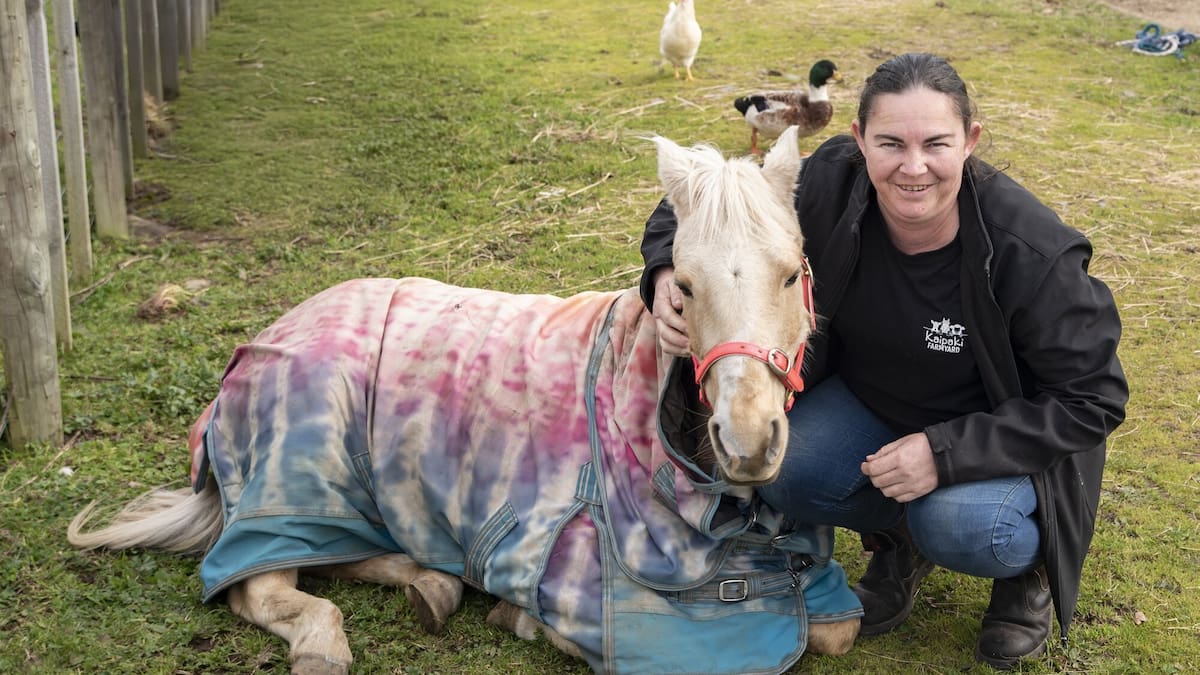Livestock management
The yard area has an outer ring of paddocks where the cows, sheep, and horses are cross-grazed.
This also assists with reducing parasite loads on the pasture.
“It’s the old-fashioned way, animals are rotated and then we harrow the paddock.
“We don’t have to collect dung as it all gets broken up and goes back into the land.”
About 6ha of grass silage and conventional hay bales (for easier management) are grown on the land annually.
This is sufficient to feed the animals in winter or summer drought.
The inner paddocks house the goats, donkeys, pigs and baby animals that aren’t with a mother.
“We get in lambs and calves each season so children can bottle feed baby animals.”
An old cowshed on the property provides the perfect sheltered area for the house pets.
Visitors get to cuddle guinea pigs and rabbits and watch the antics of mice, chinchillas, rats, bearded dragons, water dragons and the blue-tongued lizard.
Breeding and feeding
Week-old lambs in the shed. Photo / Catherine Fry
“We allow selective breeding so that people can experience seeing babies with their mother.
“We have five breeding ewes and Nala, our speckled park cow.
“Red, our bull, has sired some of our cows.”
You can’t move around the farm without an entourage of ducks and chickens.
While their breeding isn’t thwarted, eggs are collected daily, so it is rare for anything to hatch.
Amber with their Flemish Giant rabbit, Lenny. Photo / Catherine Fry
Care is taken with prolific breeders such as rabbits, mice, rats and guinea pigs, keeping males and females separate unless babies are wanted.
Rick and his daughter, Katie, do most of the work on the farm.
Keeping the pet animal cages clean takes a considerable amount of work each week.
Children Sophie and Jake, and Amber and her parents all muck in on open days.
When pony rides are on, it’s labour-intensive for safety reasons.
“The grazing animals eat the pasture and home-grown supplement feed.
“The horses do require more specialised feed, but we have found a pretty universal pellet that a lot of the animals can be hand-fed by visitors.”
Amber feeding Halcyon Hills Sir Totara, the pure-bred red poll bull, aka Red. Photo / Catherine Fry
The pet animals enjoy greens from a local greengrocer, and the pigs eat the other vege scraps.
Amber said Red the bull loved eating bananas.
Wheelbarrows and buckets of appropriate feed are stationed around the farm walk so visitors can hand-feed the animals themselves.
Red the bull will meekly take silage from over the fence.
Amber hastened to add that even if they don’t go in with him at close quarters, “at the end of the day, he’s a bull and precautions are needed”.
With home section sizes getting smaller and smaller, Amber said it was getting harder for children to be exposed to pet and farm animals.
“It’s such a pleasure to see the excitement on the children’s faces when they actually get a close-up encounter with an animal they’ve only previously seen in a picture or on TV.
“It really makes the hard work worthwhile.”

